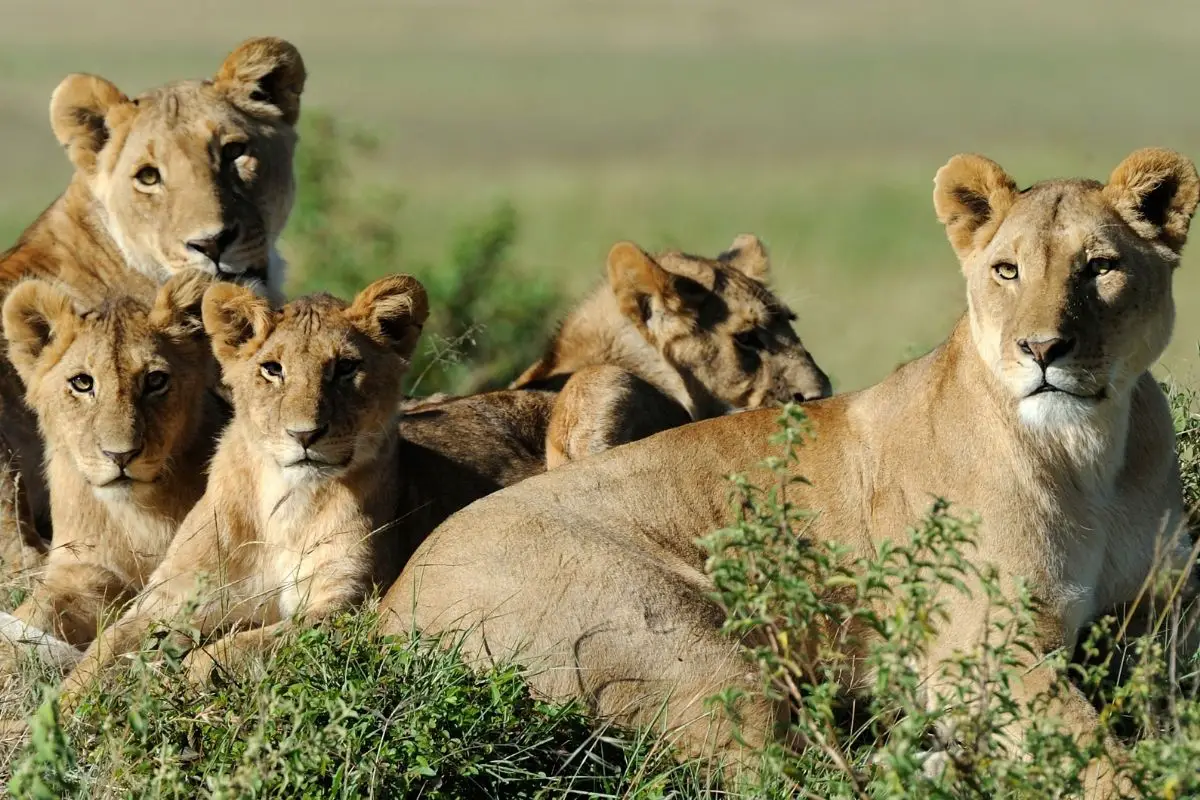Across the rugged landscapes of North America, one of nature’s most elusive predators continues to capture our fascination and concern. Mountain lions—whether you call them cougars, pumas, or panthers—represent one of conservation’s greatest success stories, yet their populations remain a complex puzzle that varies dramatically from state to state.
From California’s protected populations exceeding 6,000 individuals to Florida’s critically endangered panthers numbering barely 200, understanding the mountain lion population by state reveals a tapestry of conservation challenges, management strategies, and remarkable recovery efforts that have unfolded over the past five decades.
Current Mountain Lion Population Estimates Across the United States
The total mountain lion population in the United States is estimated between 20,000 and 40,000 individuals—a remarkable recovery from the historic lows of just 10,000 animals in the 1960s and 70s. However, these numbers tell only part of the story, as populations are far from evenly distributed across the country.
Western States: The Primary Stronghold
The western United States remains the primary habitat for mountain lions, with 17 states supporting resident breeding populations. Here’s where populations currently stand:
- Oregon: 6,400+ individuals (highest confirmed population)
- Colorado: 3,000-7,000 individuals
- California: 4,000-6,000 individuals
- Montana: 4,000+ individuals
- New Mexico: 3,000+ individuals
- Arizona: 2,500-3,000 individuals
- Idaho: 2,000-3,000 individuals
- Utah: 2,500+ individuals
- Washington: 2,500+ individuals
- Wyoming: 2,000+ individuals
- Nevada: 1,500+ individuals
These populations have shown remarkable stability and growth since protective measures were implemented in the 1970s. Most western states now report that their mountain lion populations have reached or are approaching carrying capacity.
Eastern Populations: A Different Story
The eastern United States presents a starkly different picture. Only Florida maintains a resident population—the endangered Florida panther, which has grown from just 20-30 individuals in the 1970s to approximately 200+ today. This recovery represents one of conservation’s most celebrated successes, though the population remains critically vulnerable.
States like Missouri have documented transient mountain lions, indicating the species’ gradual eastward expansion, but no established breeding populations exist outside of Florida in the eastern United States.
States with Confirmed Sightings but No Resident Populations
Perhaps one of the most intriguing aspects of current mountain lion distribution involves the growing number of confirmed sightings in states without established populations. This phenomenon suggests ongoing range expansion and natural recolonization efforts.
Midwest Expansion
Several Midwest states now regularly document mountain lion presence:
- Nebraska: Multiple confirmed mortalities indicate a growing transient population
- North Dakota: Confirmed breeding population in the Badlands region
- South Dakota: Established breeding population, estimated at 300+ individuals
- Iowa, Illinois, Michigan, Minnesota: Regular confirmed sightings of dispersing individuals
These sightings typically involve young males dispersing from established western populations, traveling hundreds of miles in search of new territory. DNA analysis has traced some individuals back to populations in the Black Hills of South Dakota or even as far as Wyoming.
Eastern Sightings and Debates
Eastern states continue to report mountain lion sightings, though wildlife agencies maintain that no resident populations exist outside of Florida. States reporting confirmed sightings include:
- Tennessee
- Oklahoma
- New York
- Vermont
While most wildlife biologists agree these represent dispersing individuals rather than resident populations, the frequency of sightings has increased public interest in potential recolonization of historical eastern habitats.
Conservation Status and Management Strategies by State
The approach to mountain lion conservation varies significantly across states, reflecting different population pressures, habitat conditions, and management philosophies. Understanding these differences is crucial for grasping the overall picture of mountain lion population by state dynamics.
Protection-Based Approaches
California represents the most protective approach, having banned mountain lion hunting in 1990 following a voter initiative. The state classifies mountain lions as a “specially protected species,” allowing only depredation permits when lions pose threats to livestock or human safety. This approach has contributed to California maintaining one of the largest populations in the country.
Florida takes protection even further, with the Florida panther listed under the Endangered Species Act. The state implements comprehensive habitat protection, wildlife crossings to reduce vehicle strikes, and genetic management programs to maintain population health.
Regulated Hunting States
Most western states employ regulated hunting as a population management tool, using quota systems and seasonal restrictions:
- Montana: Implements regional quotas and prohibits hunting females with dependent young
- Colorado: Uses a complex quota system with different zones and seasonal restrictions
- Wyoming: Combines hunting seasons with year-round removal in certain areas
- Idaho: Allows hunting with mandatory reporting requirements
These states argue that regulated hunting provides population control while generating revenue for conservation efforts through license sales and fees.
Emerging Management Challenges
As mountain lion populations continue to recover and expand, states face new management challenges. Human-wildlife conflict has increased as suburban development expands into mountain lion habitat. According to the National Park Service, these conflicts require innovative solutions including wildlife corridors, public education, and conflict prevention strategies.
Population Recovery Trends and Future Outlook
The story of mountain lion recovery represents one of wildlife management’s greatest successes. From near extinction in many areas during the mid-20th century, populations have rebounded remarkably across their range.
Success Factors
Several factors contributed to this remarkable recovery:
- Hunting Regulations: Implementation of science-based hunting quotas and seasonal restrictions
- Habitat Protection: Preservation of large wilderness areas and migration corridors
- Prey Recovery: Restoration of deer and elk populations provided adequate food sources
- Legal Protection: State and federal legislation protecting mountain lions and their habitat
Current Challenges
Despite overall success, mountain lion populations face ongoing challenges:
- Habitat Fragmentation: Urban development continues to fragment traditional territories
- Vehicle Strikes: Road mortality remains the leading cause of death in many populations
- Climate Change: Shifting prey distributions and habitat conditions affect population dynamics
- Human-Wildlife Conflict: Increasing encounters as development expands into mountain lion habitat
Research from the U.S. Geological Survey indicates that successful long-term conservation will require landscape-level planning and cooperative management across state boundaries.
Understanding Mountain Lion Behavior and Habitat Needs
To fully appreciate mountain lion population by state variations, it’s essential to understand these remarkable predators’ biological needs and behaviors. Mountain lions are solitary cats with specific habitat requirements that directly influence population densities and distribution patterns.
Territory and Density
Mountain lions maintain large territories that vary dramatically based on prey availability and habitat quality:
- Male territories: 30-300 square miles
- Female territories: 8-100 square miles
- Population density: Typically 1-3 adults per 100 square miles in optimal habitat
These territorial requirements explain why even large states can support relatively limited populations compared to other wildlife species.
Reproduction and Population Growth
Mountain lion reproduction rates directly impact population recovery and growth:
- Breeding age: Females typically breed at 2-3 years
- Litter size: 1-4 kittens (average 2-3)
- Breeding interval: Every 2-3 years
- Survival rates: 50-70% kitten survival to independence
These relatively low reproduction rates mean that mountain lion populations recover slowly from declines, making conservation efforts critical for long-term success.
Practical Implications for Wildlife Enthusiasts and Residents
Understanding mountain lion populations in your state has practical implications for outdoor recreation, property management, and personal safety. Whether you’re planning a mountain lion hunting expedition or simply want to recreate safely in mountain lion habitat, knowing local population dynamics is crucial.
Safety Considerations by Region
High Population States (California, Colorado, Oregon):
- Higher likelihood of encounters during outdoor activities
- Increased importance of proper food storage while camping
- Need for awareness during dawn and dusk activities
Expanding Range States (Midwest):
- Residents may be unfamiliar with mountain lion behavior
- Livestock protection becomes increasingly important
- Public education programs are essential
What to Do During an Encounter
Regardless of your state’s population levels, knowing proper mountain lion encounter protocols is essential:
- Maintain eye contact and appear as large as possible
- Back away slowly—never run or turn your back
- Make noise and throw objects if the animal approaches
- Fight back if attacked—mountain lions can be deterred
The Future of Mountain Lion Conservation
As we look toward the future, mountain lion population by state will continue evolving based on habitat changes, climate impacts, and management decisions. The success story of mountain lion recovery demonstrates that with proper management, even large predators can recover from near extinction.
Key trends to watch include continued eastward expansion, increasing human-wildlife conflicts in growing suburban areas, and the need for landscape-level conservation planning that transcends state boundaries. States are increasingly recognizing that effective mountain lion management requires cooperation across jurisdictions and consideration of the species’ far-ranging nature.
For those interested in supporting mountain lion conservation, consider supporting habitat protection efforts, advocating for wildlife corridors, and staying informed about management decisions in your state. Whether through citizen science projects, conservation organizations, or simply spreading awareness about these remarkable predators, everyone can play a role in ensuring that future generations can appreciate healthy mountain lion populations across their natural range.
The story of mountain lion recovery reminds us that conservation success is possible when science-based management, public support, and political will align. As populations continue to recover and expand, the challenge now lies in maintaining that success while adapting to changing landscapes and growing human populations.
- Bengal Cat vs Wild Bengal Tiger: Complete Comparison 2025 - October 31, 2025
- Complete Wild Cat Spotting Guide for Hikers 2025 - October 31, 2025
- Lynx vs Bobcat: Complete Field Identification Guide 2025 - October 30, 2025








